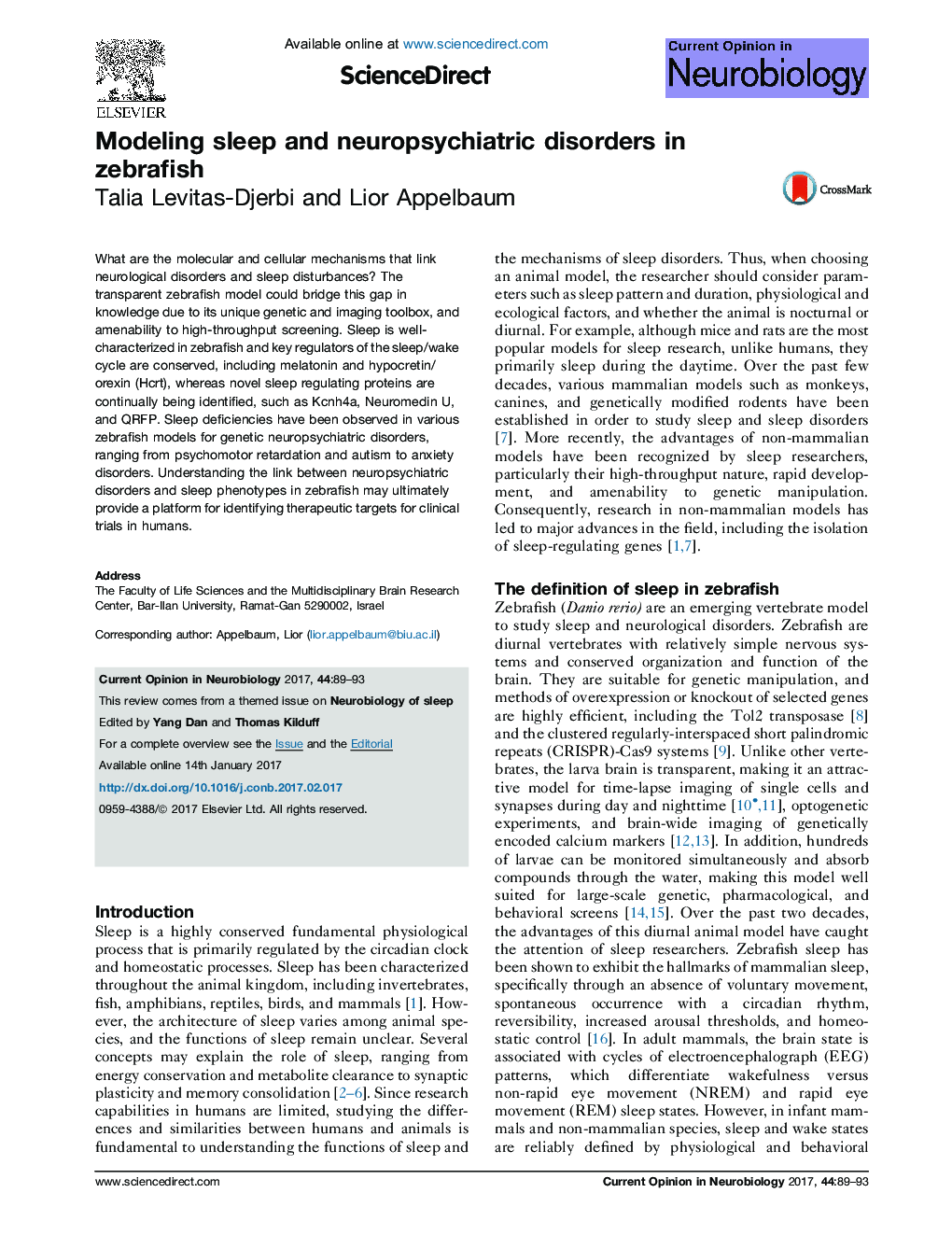| Article ID | Journal | Published Year | Pages | File Type |
|---|---|---|---|---|
| 5737010 | Current Opinion in Neurobiology | 2017 | 5 Pages |
â¢Sleep is conserved in zebrafish and defined by behavioral criteria.â¢Zebrafish enable imaging of single organelles and cells during the day and night.â¢Genetic and pharmacological screens in zebrafish identify novel sleep regulators.â¢Sleep phenotypes may be used as biomarkers for neuropsychiatric disorders.â¢Rescue of sleep deficiencies in zebrafish may lead to discovery of therapeutic drugs.
What are the molecular and cellular mechanisms that link neurological disorders and sleep disturbances? The transparent zebrafish model could bridge this gap in knowledge due to its unique genetic and imaging toolbox, and amenability to high-throughput screening. Sleep is well-characterized in zebrafish and key regulators of the sleep/wake cycle are conserved, including melatonin and hypocretin/orexin (Hcrt), whereas novel sleep regulating proteins are continually being identified, such as Kcnh4a, Neuromedin U, and QRFP. Sleep deficiencies have been observed in various zebrafish models for genetic neuropsychiatric disorders, ranging from psychomotor retardation and autism to anxiety disorders. Understanding the link between neuropsychiatric disorders and sleep phenotypes in zebrafish may ultimately provide a platform for identifying therapeutic targets for clinical trials in humans.
Graphical abstractSleep phenotypes in zebrafish models for genetic neuropsychiatric disorders may bridge the gap between basic and translation research.Download high-res image (99KB)Download full-size image
